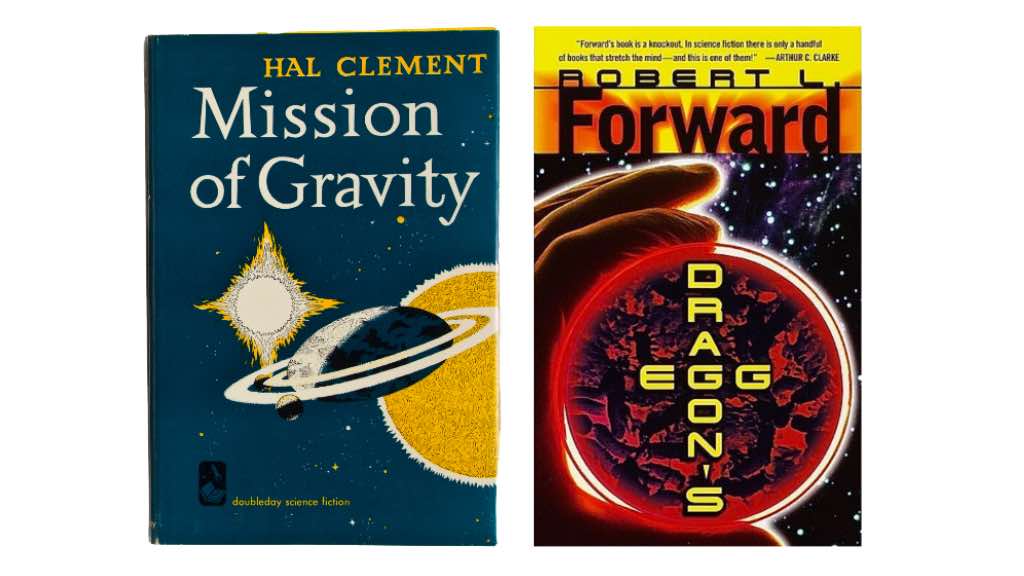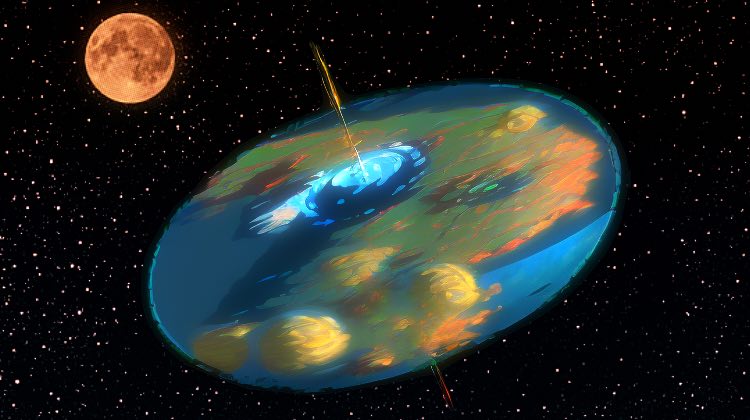Short days–that’s what I wanted. Jasper’s world should have days about one hour long. How is the topic of this post and the next. Why is another story.
What’s hard about short days, you ask? The Gem Merchant’s Son is a fantasy. I could have said “let the days be one hour long” and be done with it. But I’ve never been a fan of ‘just magic’; I like there to be a system to it, even a science to it. Both The Gem Merchant’s Son and the Clanmarks series, which are set in the same world, are as much SF as F, and I like my SF hard as old cheese.
My first try: “Let Jasper’s world spin very fast.” Then the days would be short and consistent with the physics we know. But problems, problems.
The first problem: the Earth is not a solid ball; it is viscous, like plasticine. That’s more or less true for any planet. When it spins, it deforms, becomes flattened. Since Earth does spin once in 24 hours, its shape is ellipsoid, flatter at the poles and wider around the equator. But the Earth spins slowly enough that this effect isn’t noticeable or important to most people (though it is important enough that it has its own field of study: geodesy). If the Earth spun faster, it would become flatter, like this:

Image credit: Jos Leys and Etienne Ghys, josleys.com, The Shape of Planet Earth
Could the Earth or a planet with Earth’s mass spin fast enough to have a one hour day? The answer is ’no’. According to The Shape of the Earth, a fascinating and very readable paper by Jos Lyse and Etienne Ghys, the maximum rotational speed is reached when the radius is only about 20% larger than the current radius. This speed is then about 11 times the current speed, so that our days at this point would last 2 hours and 8 minutes! Beyond that point, the days will get longer again, as the speed decreases.
But that’s okay—a two hour day would work for the story. If I went with a two hour day, there’d be no violation of physics. As an aside, theories of the origin of the Earth-Moon system suggest that the Earth was once spinning perhaps six times faster than it is today, so that the day was only four hours long.
But, seasons! One problem is that the deformation of the planet’s shape would change the seasonal variation in the day. In place of short days, there would be seasons without sunlight over much larger parts of the Earth than we experience, and equally long seasons in which the sun never sets. How about tilting the axis so that Earth’s equator is better aligned with the ecliptic (the plane of Earth’s orbit)? Sure, but then the seasons would become less important, and seasons help the story.
But, weather! On such a quickly-spinning world, the weather would be fierce. Interesting, but not really the point of the story.
But, questions! Astute, science-minded readers would ask: how did Earth get to spin so fast? Do you know how much energy it would take to change its angular momentum that much? The surface would become molten in the process! And how did the axis of rotation change? I didn’t want to explain–and I couldn’t think of an explanation that would fit the backstory.
But, language! The biggest problem I encountered was not the physics of it, but a writerly one: the impact on language. Our idea of ‘day’ and ’night’ are so culturally and biologically ingrained that you tamper with them at your peril. When I called my short days ‘days’, Beta readers on CritiqueCircle were confused by the timeline, even if I tried to make it clear that the days were short. When I invented new terms (e.g. ‘circade’ for a 24 hour wake-sleep cycle, which spanned twelve short days), readers got lost in the in-world jargon. It created reading hiccups. Potholes. Confusion.
In short, it wasn’t Earth anymore. It was another world altogether, and hard SF-style explanations of the peculiar environment distracted from the story and drowned the Fantasy.
How I decided to solve it is the subject of Arriving at Ard’s Girdle, Part 2.
By the way, two very good and very hard SF stories that feature quickly-spinning worlds have stuck in my mind, and remain on my bookshelves: the late great Hal Clement’s Mission of Gravity (1953), and Robert L. Forward’s Dragon’s Egg (1980). Both are classics of the sub-genre and I recommend them.

Image credit: Publisher covers
